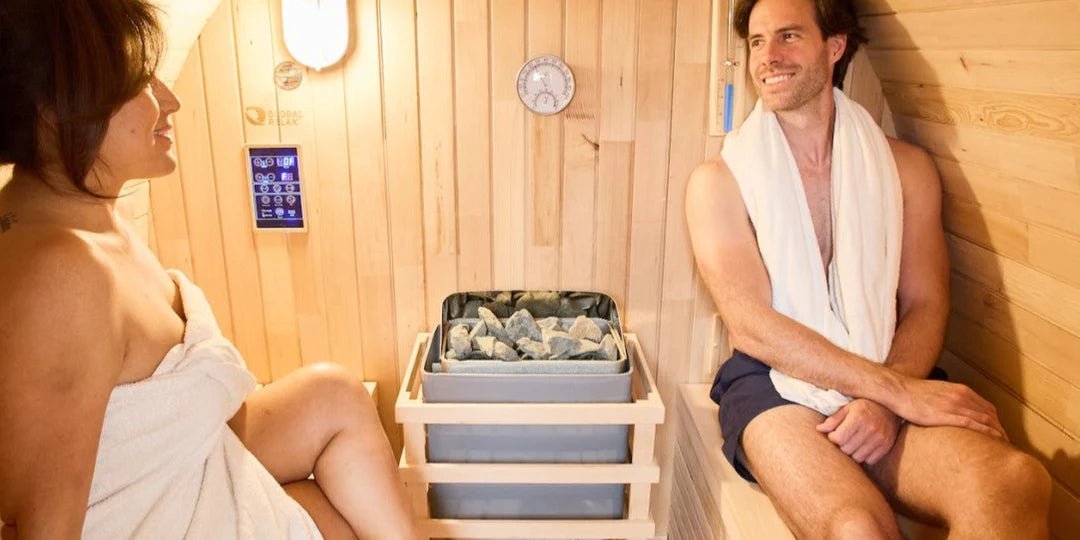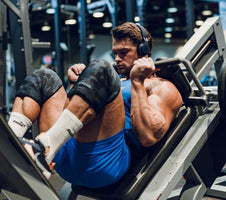
Do Saunas, Hot Tubs and Ice Baths Really Aid Post-Gym Recovery?
Saunas, hot tubs, and ice baths have become increasingly popular among gym-goers as a post-workout recovery strategy. Many believe that these treatments can help reduce muscle soreness and improve overall recovery time. But do they actually work?
Understanding post-workout recovery is crucial to determining whether saunas, hot tubs, and ice baths are effective. After a workout, the body undergoes several physiological changes, including muscle damage and inflammation. Recovery is the process by which the body repairs these damaged tissues and adapts to the stress of exercise. While rest and proper nutrition are essential components of recovery, other strategies, such as saunas, hot tubs, and ice baths, may also play a role.
Key Takeaways
- Saunas, hot tubs, and ice baths are popular post-workout recovery strategies.
- Post-workout recovery involves repairing damaged tissues and adapting to exercise stress.
- While rest and proper nutrition are essential for recovery, saunas, hot tubs, and ice baths may also play a role.
Understanding Post-Workout Recovery
After a strenuous workout, the body's muscles may feel sore and tired. This is because during exercise, the muscles experience small tears and damage, which can lead to inflammation and soreness. The body needs time to repair these muscles and recover from the workout.
Post-workout recovery is the process of helping the body recover from exercise and reduce muscle soreness. There are various methods to aid in post-workout recovery, including active recovery, stretching, and cold and hot therapies such as ice baths, saunas, and hot tubs.
Active recovery involves low-intensity exercises such as walking, cycling, or yoga, which can help increase blood flow to the muscles and reduce soreness. Stretching can also help to improve flexibility and reduce muscle tension.
Cold therapies such as ice baths can help to reduce inflammation and soreness by constricting blood vessels and reducing blood flow to the muscles. Research has found that cold water immersion can reduce muscle soreness by 20% compared to passive recovery [1]. However, ice baths may decrease gains in strength and muscle growth [2].
Hot therapies such as saunas and hot tubs can help to increase blood flow to the muscles and promote relaxation. Saunas can also help to increase the production of heat shock proteins, which can aid in muscle recovery [4]. However, it is important to note that hot therapies should be used with caution, especially for individuals with certain medical conditions such as high blood pressure.
In summary, post-workout recovery is an important part of any workout routine. Active recovery, stretching, and cold and hot therapies such as ice baths, saunas, and hot tubs can all aid in recovery and reduce muscle soreness. However, it is important to use these methods with caution and consult with a healthcare professional if you have any medical conditions.
[1] https://www.runnersworld.com/uk/training/a776522/hot-bath-or-ice-bath-which-is-best-for-recovery/ [2] https://health.osu.edu/wellness/exercise-and-nutrition/do-ice-baths-help-workout-recovery [4] https://www.healthline.com/health/fitness/sauna-after-workout
The Role of Saunas in Recovery
Saunas have been used for centuries as a way to promote relaxation and improve overall health. In recent years, they have gained popularity among athletes and fitness enthusiasts as a post-workout recovery tool. But what is the role of saunas in recovery, and how do they work?
One of the main ways that saunas help with recovery is through the production of heat shock proteins (HSPs). These proteins are produced in response to heat exposure and have been shown to have a number of benefits for the body, including improved circulation, reduced blood pressure, and increased endurance.
Saunas also promote sweating, which can help to flush out toxins and other waste products from the body. This can be particularly beneficial for athletes who may have built up lactic acid in their muscles after a workout.
In addition to the physical benefits, saunas can also help to promote relaxation and reduce stress. The heat and humidity can help to soothe sore muscles and calm the mind, which can be especially helpful after a tough workout.
It's important to note that saunas are not a one-size-fits-all solution, and they may not be appropriate for everyone. People with certain medical conditions, such as high blood pressure or heart disease, should consult with their doctor before using a sauna.
Check out these premium saunas:
Hot Tubs for Muscle Relaxation
Hot tubs are a popular way to relax and unwind after a tough workout. They are also known to help with post-gym recovery by increasing blood flow and promoting muscle relaxation. The warm water in a hot tub can help dilate blood vessels, which in turn promotes better blood flow and heart health.
One of the main benefits of using a hot tub for muscle relaxation is the reduction in muscle soreness and stiffness. The heat from the water can help soothe sore muscles and reduce inflammation. This can be especially beneficial for athletes and those who engage in strenuous exercise on a regular basis.
Hot tubs can also help with stress relief and promote a better night's sleep. The warm water and massaging jets can help ease tension in the body and promote relaxation, which can be especially helpful after a long day at work or a tough workout.
It is important to note that hot tubs should be used in moderation and with caution. Individuals with certain medical conditions, such as high blood pressure or heart disease, should consult with their doctor before using a hot tub. It is also important to maintain proper hygiene and cleanliness when using a hot tub to prevent the spread of bacteria and infections.
View our recommended Hot Tubs:
Ice Baths and Cold Therapy
Ice baths, also known as cold water immersion, are a popular method for post-gym recovery. This therapeutic method involves immersing the body in ice-cold water for a short period of time, typically between 5 to 10 minutes. The cold water stimulates the body's natural healing process and helps to reduce inflammation and muscle soreness after intense exercise.
Cold therapy has been found to be effective in reducing inflammation and muscle soreness. The cold temperature constricts blood vessels and reduces blood flow to the affected area, which helps to reduce swelling and inflammation. In addition, cold therapy can help to speed up the recovery process by boosting blood circulation, flushing out toxins, and alleviating stress and fatigue.
One of the benefits of ice baths is the production of cold shock proteins. These proteins help to reduce inflammation and boost the immune system, which can help to prevent illness and injury. In addition, ice baths may help to increase dopamine levels, which can improve mood and reduce feelings of stress and anxiety.
It is important to note that ice baths should not be used for extended periods of time, as this can lead to hypothermia. It is recommended to limit ice baths to no more than 10 minutes at a time, and to gradually increase the duration over time.
Overall, ice baths and cold therapy can be an effective method for post-gym recovery. They can help to reduce inflammation, muscle soreness, and fatigue, and may also provide other health benefits such as boosting the immune system and improving mood.
Our favourite Ice Baths & Chill Tubs
Contrast Therapy and Its Benefits
Contrast therapy involves alternating between hot and cold temperatures to promote blood flow and circulation. This technique has been used for centuries and has been found to be effective in reducing inflammation and muscle soreness, especially after a workout.
During contrast therapy, the individual alternates between hot and cold baths or showers, spending a few minutes in each. The hot water causes blood vessels to dilate, increasing blood flow and promoting the removal of waste products from the muscles. The cold water causes blood vessels to constrict, reducing inflammation and swelling.
According to a 2017 meta-analysis of research, contrast hydrotherapy can help alleviate post-game fatigue in athletes. The study found that contrasting hot and cold baths helped team sports players recover faster from games and training sessions.
Contrast therapy has also been linked to improved circulation and reduction of inflammation and pain, especially after injury. It is a common technique used among athletes and has recently been popularized by the sauna and ice bath combo.
Overall, contrast therapy can be an effective way to promote blood flow and circulation, reduce inflammation and muscle soreness, and aid in post-workout recovery. However, it is important to consult with a healthcare professional before starting any new treatment or therapy.
Addressing Delayed Onset Muscle Soreness (DOMS)
Delayed Onset Muscle Soreness (DOMS) is a common neuromuscular condition that typically occurs 24 to 72 hours after a workout. DOMS is characterized by endogenous muscle pain or stiffness that develops a day or two after exercise. While it is most common in people who have just started exercising, it can happen to anyone who has increased the duration or intensity of a workout routine. DOMS can cause cramps, muscle strain, impaired muscle function, and delayed-onset muscle soreness.
Many athletes and fitness enthusiasts believe that saunas, hot tubs, and ice baths can help alleviate DOMS. However, there is limited scientific evidence to support this claim. According to a study published in the Journal of Human Kinetics, high-intensity exercise or unaccustomed eccentric exercise can cause Exercise-Induced Muscle Damage (EIMD), which usually results in DOMS. The study found that while there is some evidence to suggest that saunas can help alleviate DOMS, the evidence is not conclusive.
Another article suggests that saunas are great for relieving and preventing muscle soreness. The article states that saunas stimulate blood flow to the muscle tissue, which helps injured and sore muscles recover faster. Heat also causes the body to produce heat shock proteins, which provide tremendous benefits to muscle tissue.
However, an article published in Outside Online suggests that there is very little scientific evidence on sauna use for muscle soreness, especially for significant forms of DOMS. The article suggests that while saunas may help alleviate DOMS, they may also exacerbate muscle damage and inflammation.
In conclusion, while saunas, hot tubs, and ice baths may provide some relief for DOMS, there is limited scientific evidence to support this claim. It is important to consult with a healthcare professional before using these methods to alleviate DOMS.
Impact on Physical Performance
The use of saunas, hot tubs, and ice baths for post-gym recovery has been a topic of discussion for a long time. While some athletes swear by them, others remain sceptical. However, recent research has shed some light on the impact of these recovery methods on physical performance.
Endurance exercise is one area where saunas and hot tubs have shown some positive effects. A study published in the Journal of Science and Medicine in Sport found that a post-exercise sauna session improved endurance performance in male runners. The study showed that the sauna group had better running performance than the control group, indicating that saunas may have a positive impact on endurance exercise.
On the other hand, ice baths have been found to be more effective in improving power and strength. A study published in the Journal of Athletic Training found that ice baths improved power output in athletes. The study showed that athletes who used ice baths had a better power output during their next workout session than those who did not use ice baths.
Reaction time is another area where ice baths have shown some positive effects. A study published in the International Journal of Sports Medicine found that ice baths improved reaction time in athletes. The study showed that athletes who used ice baths had a better reaction time than those who did not use ice baths.
While saunas, hot tubs, and ice baths have shown some positive effects on physical performance, it is important to note that the results are not always consistent. Some studies have found no significant difference in physical performance between those who used these recovery methods and those who did not.
In summary, saunas and hot tubs may have a positive impact on endurance exercise, while ice baths may be more effective in improving power, strength, and reaction time. However, more research is needed to fully understand the impact of these recovery methods on physical performance.
The Role of Sleep in Recovery
Sleep plays a crucial role in post-gym recovery. During sleep, the body repairs and regenerates tissues, including muscle tissues that may have been damaged during exercise. Therefore, getting enough sleep is essential for athletes and fitness enthusiasts who want to optimize their recovery.
Research has shown that sleep quality is just as important as sleep quantity when it comes to recovery. Poor sleep quality can lead to increased levels of inflammation and oxidative stress in the body, which can hinder recovery and increase the risk of injury. On the other hand, good sleep quality can help reduce inflammation and promote tissue repair, leading to faster recovery times.
A study published in the Journal of Sports Sciences found that sleep quality was a significant predictor of recovery among athletes. The study found that athletes who reported better sleep quality had lower levels of muscle soreness and better performance during subsequent workouts.
In addition to promoting tissue repair, sleep also plays a role in regulating hormones that are essential for recovery. For example, growth hormone, which is important for muscle growth and repair, is primarily released during deep sleep. Therefore, getting enough deep sleep is crucial for athletes who want to optimize their recovery.
It is recommended that adults get between 7-9 hours of sleep per night, although some athletes may need more depending on their training load and individual needs. Additionally, establishing a consistent sleep schedule and creating a sleep-conducive environment can help improve sleep quality and promote recovery.
In conclusion, sleep plays a critical role in post-gym recovery, and getting enough high-quality sleep is essential for athletes and fitness enthusiasts who want to optimize their recovery. By prioritizing sleep and creating a sleep-conducive environment, athletes can promote tissue repair, regulate hormones, and reduce inflammation, leading to faster recovery times and better performance.
Potential Risks and Precautions
While saunas, hot tubs, and ice baths can be beneficial for post-gym recovery, they also come with potential risks and precautions that should be considered.
High Blood Pressure
Individuals with high blood pressure should be cautious when using saunas, hot tubs, or ice baths. The heat or cold can cause blood vessels to dilate and increase blood pressure. It is recommended that individuals with high blood pressure consult with their healthcare provider before using these facilities.
Dehydration
Saunas, hot tubs, and ice baths can cause dehydration, especially if used for extended periods of time. It is important to drink plenty of water before and after using these facilities to prevent dehydration. Individuals with diabetes should be particularly cautious as they are at a higher risk of dehydration.
Diabetes
Individuals with diabetes should also be cautious when using saunas, hot tubs, or ice baths. The heat or cold can affect blood sugar levels, and it is recommended that individuals with diabetes monitor their blood sugar levels closely when using these facilities.
Other Precautions
Other precautions that should be considered when using saunas, hot tubs, or ice baths include:
- Limiting use to no more than 20 minutes at a time
- Avoiding alcohol and drugs before or during use
- Not using these facilities if pregnant or if you have a history of heart disease, stroke, or other medical conditions
- Showering before and after use to prevent the spread of bacteria and viruses
Overall, while saunas, hot tubs, and ice baths can be beneficial for post-gym recovery, it is important to be aware of the potential risks and precautions and to use these facilities in moderation.
Frequently Asked Questions
How long should I wait before taking a cold plunge after using a sauna?
It is recommended to wait for at least 10-15 minutes before taking a cold plunge after using a sauna. This allows your body to cool down and adjust to the temperature change, preventing any sudden shock to the system.
Can ice baths help with post-exercise muscle recovery?
Yes, ice baths can help with post-exercise muscle recovery. The cold temperature of the water helps to reduce inflammation and muscle soreness, allowing for faster recovery.
What are the benefits of switching between sauna and ice bath for post-workout recovery?
Switching between sauna and ice bath can provide a range of benefits for post-workout recovery. The heat from the sauna helps to increase blood flow and relax muscles, while the cold temperature of the ice bath reduces inflammation and promotes muscle recovery. Alternating between the two can provide a contrast therapy effect, which can help to improve circulation and promote overall recovery.
Is it better to use a hot tub or sauna for post-gym recovery?
Both hot tubs and saunas can be beneficial for post-gym recovery. Hot tubs can help to relax muscles and reduce soreness, while saunas can help to increase blood flow and promote relaxation. Ultimately, the choice between the two will depend on personal preference and availability.
What are the benefits of using an ice bath after a workout?
Using an ice bath after a workout can provide a range of benefits, including reducing inflammation, promoting muscle recovery, and reducing muscle soreness. The cold temperature of the water can also help to increase circulation and boost overall recovery.





